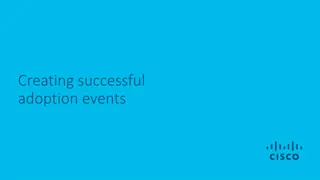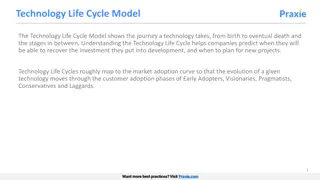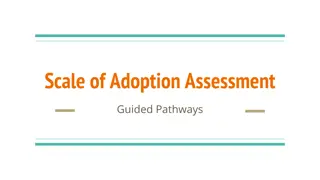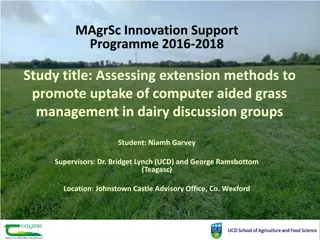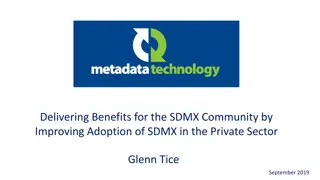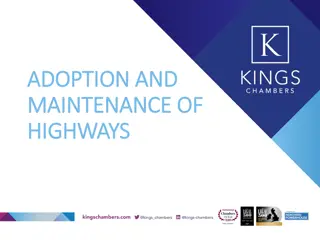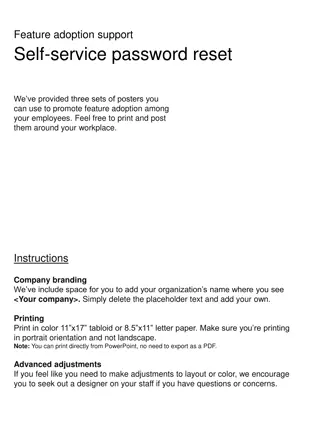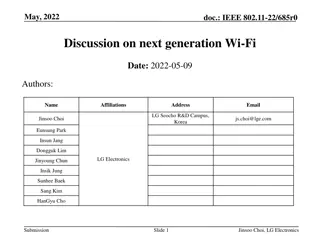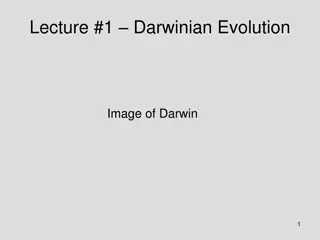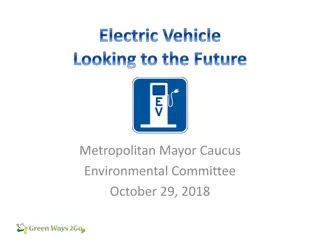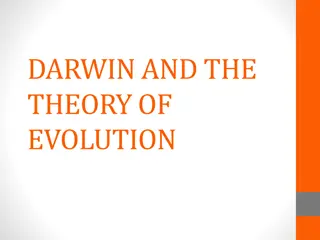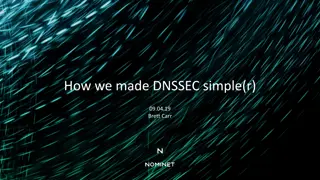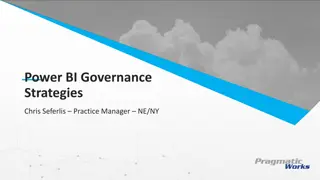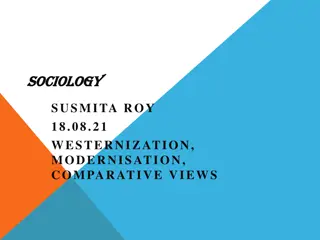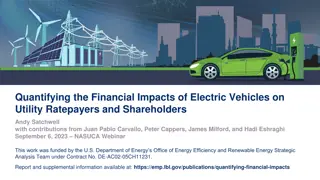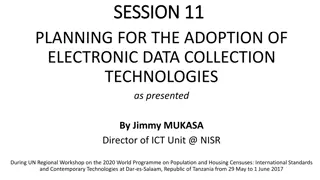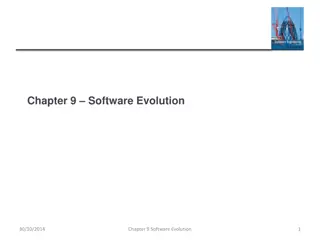Insights into Technology Adoption and Evolution
Delve into the concept of technology adoption driven by factors like utility, consumer demand, marketing, cost, and more. Explore examples of technology-driven transformations and the influence of early adoption on competitive positioning. Uncover the complexities behind the success of IPv4, the challenges of IPv6 adoption, internet security issues, and the entrenched position of tech giants like Google in the market.
Download Presentation

Please find below an Image/Link to download the presentation.
The content on the website is provided AS IS for your information and personal use only. It may not be sold, licensed, or shared on other websites without obtaining consent from the author. Download presentation by click this link. If you encounter any issues during the download, it is possible that the publisher has removed the file from their server.
E N D
Presentation Transcript
Technology Drivers Geoff Huston Chief Scientist APNIC Labs
The Pace of Consumer Technology Adoption 20 years Cellphones 50 years Household Electricity Internet 15 years 80 years Telephone
What Drives Technology Adoption? Utility? Consumer demand? Provider push? Marketing impetus? Cost? Revenue opportunities? FOMO? (fear of missing out)
Examples of Technology-Driven Transformations Circuits to Packets 100x unit cost reduction in network service The change was large enough to destroy the existing telco market Hardware to Cloudware 2x 4x unit cost reduction Moderate pace of change that has allowed some incumbents to ride the change while others have had a harder time Domain Name Certificates From luxury good to free commodity resulting in market destruction Fixed to Mobile Higher value perception allowed a price premium for mobile services
Some providers see advantage in adoption Competitive positioning in a diverse market Early adoption of future mainstream technologies (first mover advantage) Perception of enhanced utility, security and safety in these more recent technologies
Sometimes its not so obvious Why was IPv4 a runaway success while IPv6 has been a slow motion train wreck of prevarication and delay? Why is security in the Internet a market failure? Is Google now so entrenched that it is beyond all but the most disruptive of competitive technology pressures?
The saga of IPv6 IPv4 exhaustion was meant to propel IPv6 adoption We were meant to have started and finished the transition before IPv4 ran out We have been playing on the precipice of IPV4 exhaustion for the past 10 years, yet no IPV4 exhaustion and no universal IPv6 25 year transition with no end in sight Why? No marginal unit cost improvement Incumbents feel no major pressure to adopt NATs vastly increase the address efficiency factor
Drivers No clear early adopter advantage No clear need Client/server architectures don t require a universal address model NATs suppress demand through localisation and time multiplexing IPv6 is a 1990 s technology solution to a 1980 s networking architectural challenge today s CDN feeder networks do not need globally unique address plans across every device all of the time
Another example of a stalled transition DNSSEC Adding digital signature into the DNS to allow end users to be able to rely on the correctness of data provided in a DNS response Increased unit cost without clear incremental benefits Another protracted transition with no end in sight
Why? Increased operational cost without clear incremental benefits Not supported all the way to the edge of the network Structural lies in the DNS are now what we expect/depend upon clean DNS resolvers DNS64 No clear use case for a trusted DNS system Too slow to replace the Web PKI Does not get to the edge Too many intermediaries
Why do transitions fail? No early adopter advantage Incumbent resistance Regulatory barriers No consumer interest No adoption momentum Alternate use models
Challenges for Adoption 1. competitive environment This is a deregulated and highly There are many different players Each with their own perspective ? And all potential approaches will be explored!
Challenges for Adoption 2. The myth of long-term planning ? IPv6 Transition will take many years... 5 years, maybe 10 years, maybe longer Are we still firmly committed to the plans we had 5 years ago? How about our 10-year-old plans? The longer the period of transition, the higher the risk of completely losing the plot and heading into other directions!
Challenges for Adoption 3. The Internet keeps changing Today s Internet Architecture
What drives change? The Internet is a market, like any other Consumers of Internet goods and services make purchasing choices These consumer choices are what drives the market Consumers tend to show cost-based preferences Innovation that reduces the cost base of services tend to gain market share The greater the cost shift the greater the impact of the innovation on the providers There is often a tipping point of innovative change that makes it irresistible
Economics of Innovation Adoption pressure Incumbent Resistance Incumbent Replacement Market Destruction! 2x 4x 16x 64x 32x Unit Cost Reduction
What resists change? Volume tends to increase inertial resistance And the digital world has massive volume Monopoly incumbency resists change And the digital world is now dominated by a small set of incumbents Changes that do not impact the cost base of the service increases resistance The emergence of large scale digital incumbents creates its own challenges
Economics of Innovation incumbent entrenchment level open markets monopolies Adoption pressure Incumbent Resistance Incumbent Replacement Market Destruction! 2x 4x 16x 64x 32x Unit Cost Reduction
Telco lessons The entrenched incumbency of the telco regime created an innovation debt Most of the ideas behind the internet were explored in the 1960 s But the integration of data services was resisted by the telcos as they suspected it would undermine the margins of the voice business The longer this blockage remained the greater the pressure to break through The eventual breakthrough put the entirety of the telco revenues up for grab And this is at the heart of the disruption in this sector
And today? We seem to be repeating this cycle The large scale incumbents are bedding down and stabilising their business model, and suppressing further unmanaged innovation pressures The longer this situation lasts the greater the level of disruption when it all falls apart!
Progress, far from consisting in change, depends on retentiveness. When change is absolute there remains no being to improve and no direction is set for possible improvement: and when experience is not retained, as among savages, infancy is perpetual. Those who cannot remember the past are condemned to repeat it. George Satayana, The Life of Reason, 1905-1906







